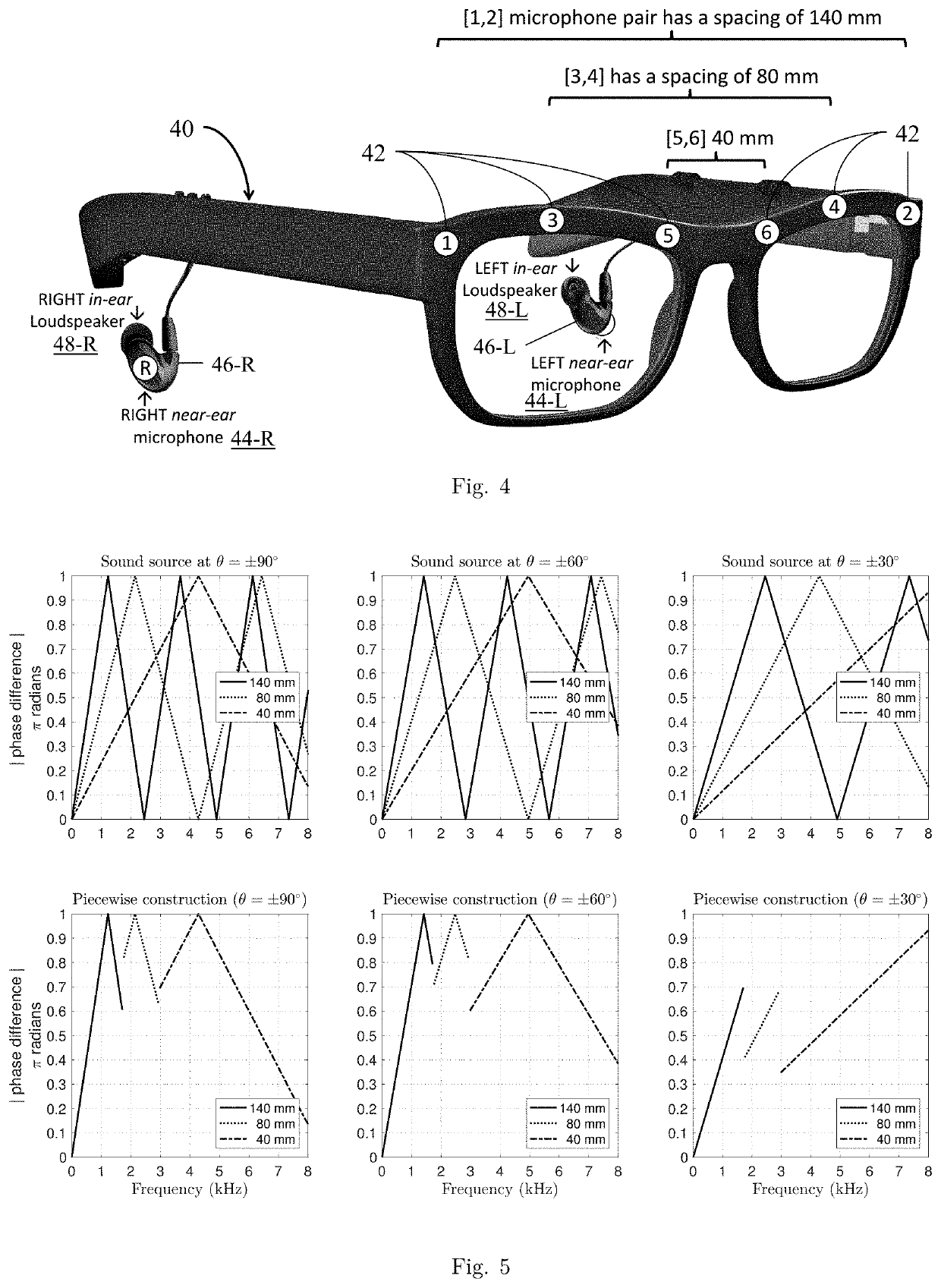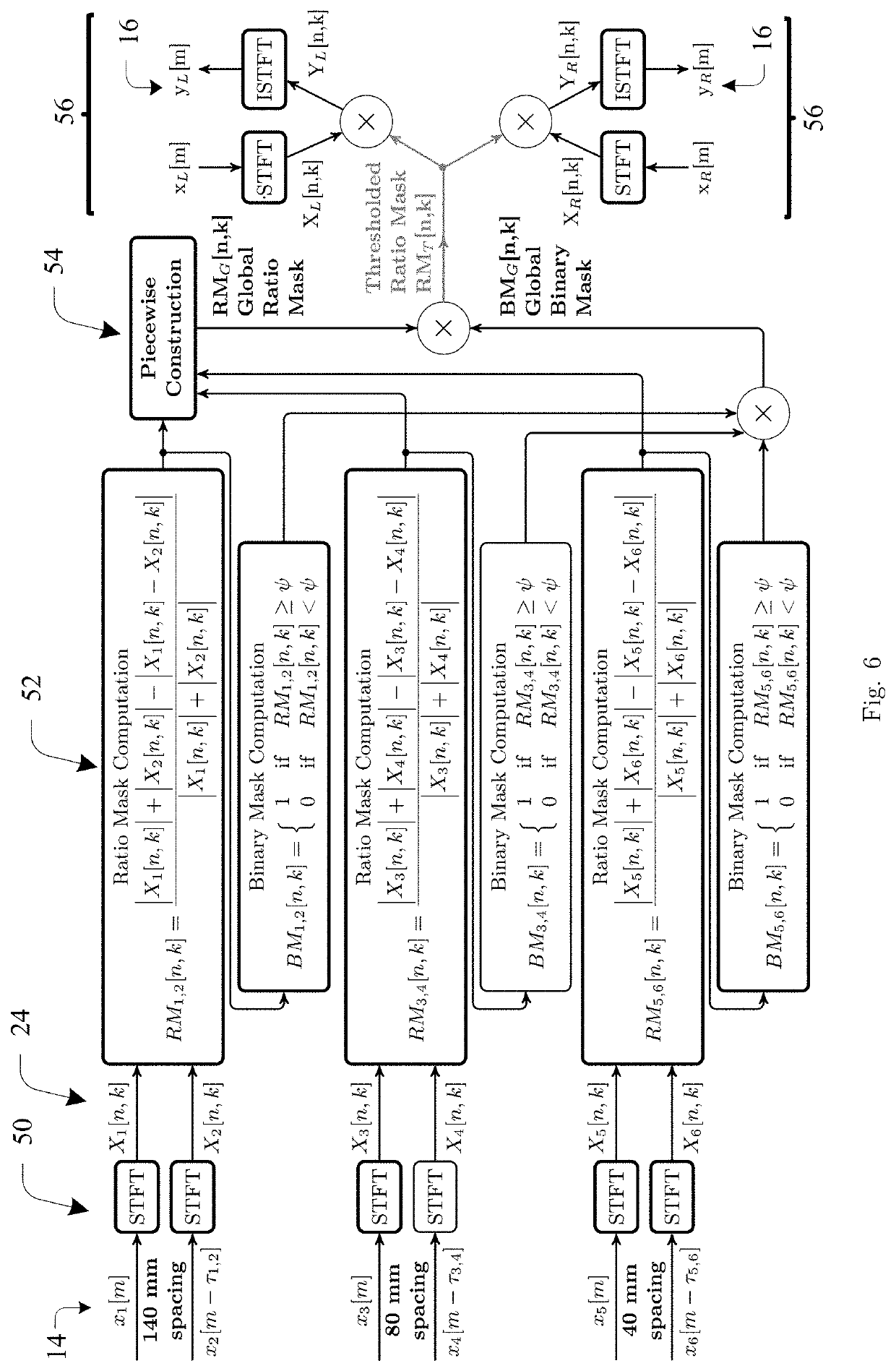Assistive listening device and human-computer interface using short-time target cancellation for improved speech intelligibility
a technology of speech intelligibility and target cancellation, which is applied in the direction of loudspeakers, microphone structure associations, instruments, etc., can solve the problems of difficult for most individuals to carry, difficult to hear voices and conversations of other people, and affecting speech intelligibility, so as to preserve binaural cues for spatial hearing and enhance speech intelligibility
- Summary
- Abstract
- Description
- Claims
- Application Information
AI Technical Summary
Benefits of technology
Problems solved by technology
Method used
Image
Examples
second embodiment
[0144]FIGS. 17-21 show a computerized realization using 8 microphones. The STTC processing serves as a front end to a computer hearing application such as automatic speech recognition (ASR). Because much of the processing is the same or similar as that of a 6-microphone system as described above, the description of FIGS. 17-21 is limited to highlighting the key differences from corresponding aspects of the 6-microphone system.
[0145]FIG. 17 is a block diagram of a specialized computer that realizes the STTC functionality. It includes one or more processors [70], primary memory [72], I / O interface circuitry [74], and secondary storage [76] all interconnected by high-speed interconnect [78] such as one or more high-bandwidth internal buses. The I / O interface circuitry [74] interfaces to external devices including the input microphones, perhaps through integral or non-integral analog-to-digital converters. In operation, the memory [72] stores computer program instructions of application...
third embodiment
[0160]Alternative embodiments of an STTC Human-Computer Interface (HCI) could use a variety of microphone array configurations and alternative processing. For example, a “broadside” and / or “endfire” array of microphone pairs could be incorporated into any number of locations and surfaces in the dashboard or cockpit of a vehicle, or in the housing of a smartphone or digital home assistant device. Furthermore, as described in ¶0051 herein and in the original specification, τ sample shifts can be used to steer the “look” direction of the microphone array. Hence, any number of microphone orientations, relative to the location of the target talker, can be used for an HCI application embodiment of the invention. For example, the alternative processing for the STTC ALD, described in paragraphs ¶0083-0093 and illustrated in FIGS. 15 and 16, could be adapted for use in an HCI application, with the microphones in an “endfire” array configuration relative to the target talker, and the STTC pro...
PUM
 Login to View More
Login to View More Abstract
Description
Claims
Application Information
 Login to View More
Login to View More - R&D Engineer
- R&D Manager
- IP Professional
- Industry Leading Data Capabilities
- Powerful AI technology
- Patent DNA Extraction
Browse by: Latest US Patents, China's latest patents, Technical Efficacy Thesaurus, Application Domain, Technology Topic, Popular Technical Reports.
© 2024 PatSnap. All rights reserved.Legal|Privacy policy|Modern Slavery Act Transparency Statement|Sitemap|About US| Contact US: help@patsnap.com










